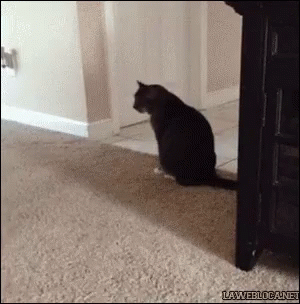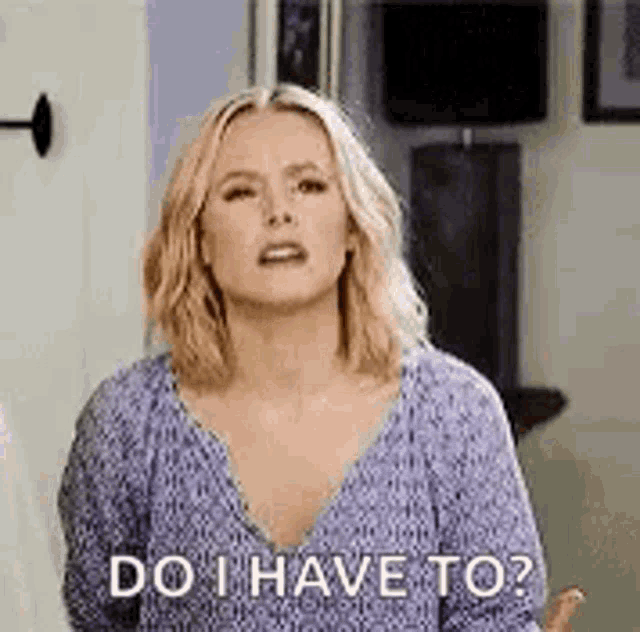
By the end of this article, you’ll know exactly which channels are right for you and when to use them.
Going solo is a daunting prospect, so hats off to you. I’ve done it, and it’s not for the faint hearted.

Now, you’ve only got so much time in the day, and you have to spend it wisely. In this post, I’m going to help you figure out which marketing channels to invest your time in.
I don’t know what level you’re at, so let’s start with a quick refresher on the different channels in the arena. If you’re a wizard 🧙♂️, you can probably skip this section.
If you’re not a wizard, marketing channels are basically any source of traffic or leads to your business. In this instance, I’m only talking about digital channels.
Mistake #1 is not knowing your audience.
You need to have a good idea who you’re selling to, their preferences, behaviour, and where they hangout online.
Here are a few questions to help you get to know your audience:
Now you have a good idea of who you are selling to (or want to, at least), you can assign marketing channels to them.
For example, if you’re selling very serious services to very serious business people, you’re probably better off marketing on LinkedIn than on TikTok.
If you’re hawking craft items, maybe try Instagram, Pinterest and Google Shopping, rather than LinkedIn or Search Ads.
You know what’s even better than making educated guesses about your audience? Actually getting to know them 🤯.

If you have existing customers, survey them. Ask about their interests, their online habits, their goals, their challenges. The better you understand them, the better you can serve them – and the more likely they are to stick around and tell their friends about you. (Hello, word of mouth referrals 🤑)
If you don’t have existing customers yet, look at competitors or similar industries. Scour online forums, social media discussions, and product reviews to get a sense of what your potential audience is looking for.
So, by now you should have a detailed profile of your audience, or at least a start.
But remember, this isn’t a one-time thing. As your business grows and evolves, so too will your audience. Keep your eyes and ears open, always.
Up next, we’ll chat about aligning channels with your goals. Get lubed up, we’re about to slide into the funnel.
Let’s dive into the funnel for a second. Not literally, as you’d get stuck at the bottom.

If you’re not familiar with the funnel, I’m going to enlighten you. If you know it backwards, feel free to skip ahead.
The funnel is a visual representation of how your customers move down their buying journey, all the way from initial awareness through to raving about you to their mates.

Right at the top, we have awareness. Customers here have no idea you exist and are looking for solutions to their pain points (the “wants and needs” from earlier).
Here, we want to show them that we exist, so we invest in wide-reaching campaigns like Display ads and Awareness campaigns on social media. We’re more interested in impressions (ad views) than clicks and conversions.
Once they’ve got their shortlist of pain point solvers (hopefully, you included), they will compare them all – this is the consideration stage.
This is where you need to double down on convincing your potential customers that you’re a better choice than your competitors. Lean into testimonials, awards, features and Unique Selling Points (USPs).
Note: A USP is Unique. As in, nobody else does/has this. “We have over 50 combined years in the industry” is NOT a USP. Neither is having great customer service.
“These patented Doggles are the only ones made from pure and unbreakable Acme Woofer Glass™” – that’s a USP.
At consideration stage, all of your channels are important, as your prospects are actively hunting down infomation on you. So spread the word about how awesome you are on social media, show up for relevant searches on Google (and Bing, I guess🤷♂️), and make sure your website makes it very obvious why you’re the best choice.
Once your prospects decide you’re probably the best option, they slide into your DMs the conversion stage.
Here, they really want to buy from you, so you better make damn sure it’s easy for them to do that. Make sure your website has clear CTA’s and a nice, simple conversion process.
If it’s a product checkout, try to keep it quick and easy – no hidden fees or crazy shipping costs!
If it’s a lead form, minimise the number of form fields. Removing as little as one form field can boost form conversions by as much as 26%.
Once they’ve converted, thank them on the website and via an email. Being polite is free and leads us nicely into…the loyalty stage.
You know what’s better than a customer? A returning customer. Mmm, that sweet Customer Lifetime Value (CLV) 🤌.
To get your customers to come back again, you need to start thinking about channels like remarketing on social/display and email drip campaigns. Remind the customer why they bought from you and show them other relevant products and services. Offer them loyalty discounts. Don’t harrass them though! Keep your comms relevant and useful.
You could also offer them referral discounts and give them a nudge onto the advocacy stage. This is the best stage of all, as your customers start doing your marketing for you.
So, sit down, relax. Your job here is done.

Nah, just kidding, now you get to start all over again with your new word of mouth referral prospects. Good luck!
Ok, you’ve obviously committed to this article, so let’s get nitty gritty and talk about the pros and cons of the channels at a deeper level.
I’m not going to talk about how to utilise these channels (that can come in other articles), I’m just going to focus on when and why.
I’m not going to lie, SEO is work. I built my career on this and I’m still learning stuff about SEO every day. Actually implementing it takes time.
Why?
Organic Search is generally a website’s biggest contributor of new users. New users are people who haven’t been on your website before. If you can’t figure out why that’s a good thing, marketing might not be the career for you.
It’s applicable for almost every stage of the funnel.
Oh, and it’s free.
When?
Literally always. Your website should be built on good SEO practices and every time you touch it, you should have SEO at the back of your mind.
Scary cons there, but don’t panic, just maintain a decent, well-written, informative and fast website, and you’re 90% there.
Also free! Another channel that you can’t really attack half-heartedly. It’s better to not be on social media than have half-dead, sad looking pages.
Why?
Prospects will often go to your social media to see if you’re legit. They’ll look at reviews, the engagement of your posts and the general vibe.
Keeping nicely curated social channels looks good, but can also provide a steady stream of fresh eyes on your brand if you’re lucky enough to get shares and tags.
When?
Organic posting in an ongoing thing. Consistency is key, rather than frequency. So if you only post once a week, that’s fine. Just make sure that post is actually worth posting.
Ideally, try 2-3 times a week to maintain a presence without burning yourself out.
Why?
There are a lot of eyeballs on social platforms. Ads let you find the right eyeballs for your content and allows you to stick it in front of them.
When?
Here’s the rub. Social media is a “cold channel”. People aren’t there to buy. In my opinion, social media is not a conversion channel.
This is controversial, but I stand by it. You can run conversion and lead ads on social, but the reality is, most people aren’t in the mood to start purchasing when they’re flipping through cat videos and pics of their sister-in-law’s fifth baby.

So when do you run social ads? Ideally, to raise brand awareness. You can run quite cost effective reach campaigns to spread your brand far and wide. As such, nice and spicy at the awareness stage of the funnel.
Email is a strong channel, when used wisely. You hear “email is dead” all the time, but they’re wrong. Fight me 😤.
Why?
If you can get someone to open an email, you’ve got an unmatched chance to speak directly to them with their full engagement for a few seconds.
When?
Email is strongest at the conversion and loyalty stages.
Nobody likes cold emails from unknown brands, so they often fall on deaf ears.
However, if you’ve got something sat in your basket, a little discount nudge can tip you over the line. Also, if you’ve already bought from a brand, you might welcome them sending you some discounts, or cross-sells down the line.
You probably already know this, but just in case, these are the ads that show up in search results – ususally at the top of the page. However, since Google started being evil, they can appear pretty much anywhere on the Search Engine Results Page (SERP).
Microsoft Ads (previously Bing Ads) tend to be a bit less intrusive, with a lower sized audience, but generally better conversion rates. See, I don’t aways dunk on Bing.
Why?
Search engines are “warm channels”. People use them when they want something: information, directions, entertainment,…to buy something.
You get a platform where people want stuff and you can directly show them the exact product they want? No brainer.
When?
Run ads based on your brand name keywords when you want to defend your brand from competitor ads.
Conversely, run ads on competitor brand keywords if you want to steal their customers. (Don’t mention your competitor’s name in your ad copy – you’ll go to Google jail 👮)
Run ads based on product categories, types and names when you want people to purchase from your website.
Run ads based on service types and names if you want to generate leads.
Why?
Honestly? Just better brand reach across the internet.
When?
Brand awareness stage. If you try to use these for leads or conversions, you’re going to be sorely disappointed. Even shooting for clicks is reaching.
Ok, putting this in the list is a bit cheeky, as content marketing really utilises a bit of everything.
Why?
Content is king. You heard that before? It’s true.👑
In this instance, we’re talking about all the written stuff on your website, and accompanying digital resources (like PDF guides, eBooks etc).
If your product isn’t sexy enough to draw in the masses on its own merits, you’re gonna have to draw them in a different way. Content gives you resources to leverage as a low-commitment way of getting users onto your website.
Then you can nurture and sell to them when they get there. Nefarious 😈.
When?
Always. A good piece of content can live forever and be used again and again.
For SEO, content gives search engines a feel for your site content, and with that comes relevant rankings.
You can cross-post blogs on social media and email newsletters. You can use guides and eBooks as lead magnets to trade for email addresses.
Build up a bank of genuinely useful content.
Hint: If your blog posts are less than a 1,000 words long, it’s probably not useful content. Stick in an FAQ somewhere.
Why?
You can get a nice boost of awareness and perceived authority by being featured on a different website.
When?
Keep an eye out for news stories that your brand has some tenuous expertise in, then reach out to journalists with with your comments. You might get featured.
Try HARO to find opportunities (not a sponsored link, it’s just helpful and free).
Also, if your company has just created something amazing, or done something really cool, publications might be interested in writing about it. It’s gotta be newsworthy though.
“We just announced a new type of goods lift, it does this and that and 🥱” – not a good press release topic.
General rule of thumb: If you wouldn’t want to read about it yourself, they probably won’t publish it.
PR is an art form, and there are unwritten rules of engagement. Have a Google about how to write a press release before you just dive in and get laughed at by journalists.
Why?
Influencers influence people. Obviously. If you can make a deal with an influencer in your niche, you can get your product or service endorsed by someone people trust, and are already warm to.
When?
Whenever you want. This is best for the awareness and consideration stages of the funnel.
Oh ho, we’re at the end of this mighty list. Let’s finish strong.
Why?
The strongest channel is word of mouth (WoM).
If your friends tell you the product they are using is amazing, you’ll probably buy it as well, right? Peer pressure is a killer.

If you can get your current customers to refer their friends and family, you’re laughing.
When?
All the time. This will happen naturally, if you provide a good service and product, but you can also grease the wheels by offering referral discounts/incentives.
If you’re flying solo, you don’t have the luxury of time. For those new to marketing, budgets put a dampener on all those exciting ideas in your head, and you’re not going to have time to pursue them all.
So, it’s time to be realistic.

By now, you should have a fair idea of your audience, your funnel and which channels you have to play with. Marry them up and you should get an idea of where to focus your efforts.
Tip: Any channels where I said you should always be doing them are a good starting point.
You need to decide where your business is at in its journey.
If it’s well established with good brand recognition, you may want to focus on the bottom of the funnel and ensure a nice conversion path and returning customers.
If you’re new to market, or your product/service is new to market, you’re probably going to want to focus on brand awareness first.
You can’t do everything at once, and as I said above, some things are best not doing at all if you can’t do them properly. Let those things sit for a while, until you figure out the essentials.
You didn’t think I was going to let you get away without doing a bit of science, did you?

Mistake #2 is ignoring the data. You’ve got a hunch about your audience and your funnel, but the proof is in the pudding (and the data).
Before you crack on with your lofty marketing plan, make sure you have the right tracking in place to figure out if it’s actually working.
Start with Google Analytics. If you’re on a web builder website like Squarespace, Shopify or Wix, there’ll be somewhere in the settings to link that up. If you’re on WordPress or a custom site, try using Google Tag Manager to get set up.
For social channels, ensure you have the right tracking code (Pixel for Meta, Insights Tag for LinkedIn), and events set up.
Use a developer if you’re not technically inclined – it’ll pay for itself with the data you’ll get.
Woah, that was a ride. You’ve just read over 3,600 words. Be proud of yourself and go grab a coffee. You’ve earned it.

Quick recap:
If you want to read more like this, I can send it straight to your inbox. I don’t automate my emails – it’ll be current and useful. Promise 😉
Founder of Latent Clarity and author of the Clarity newsletter.
I help new and solo marketers be the best they can with practical, actionable, (and sometimes funny) advice.